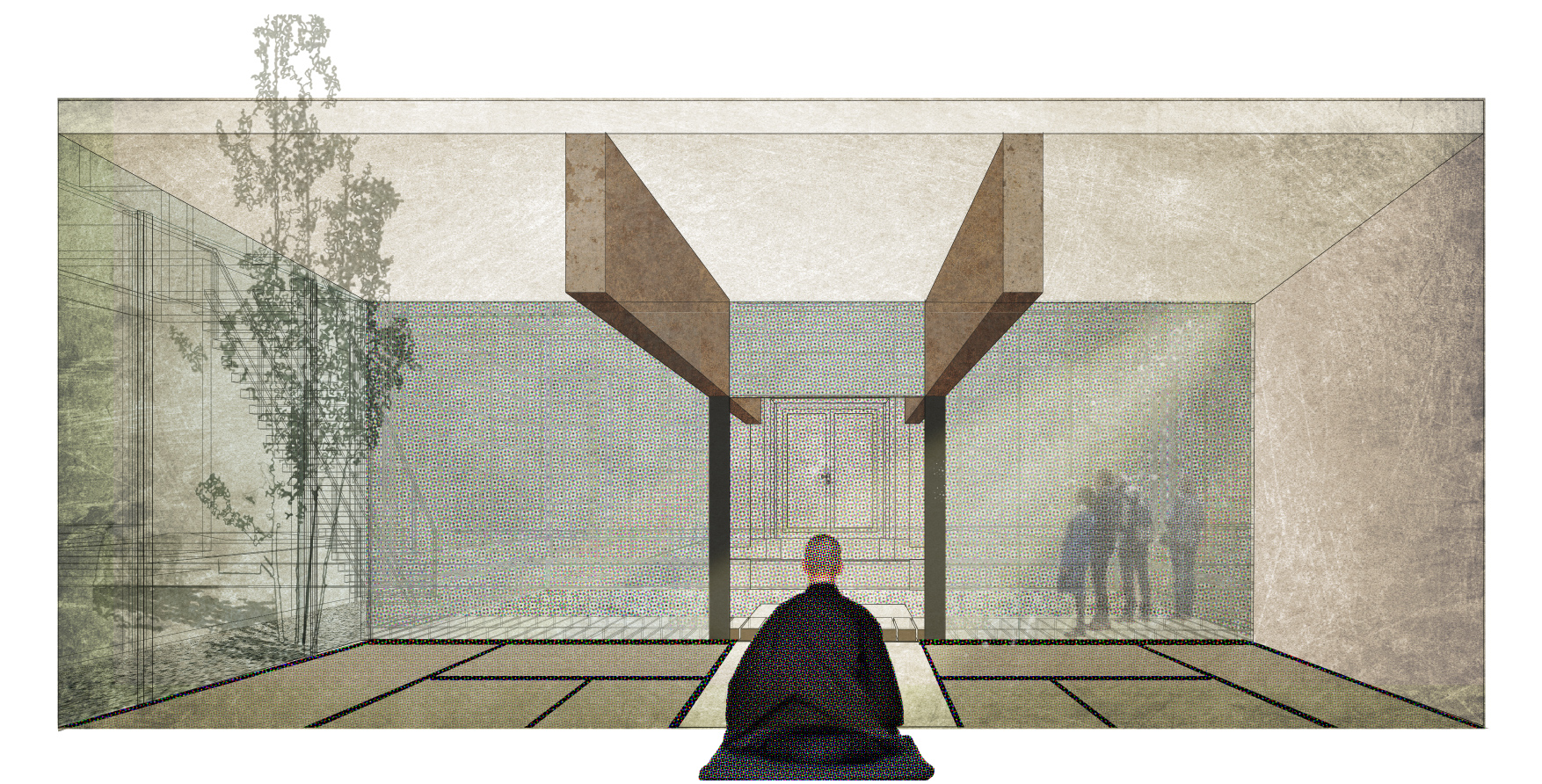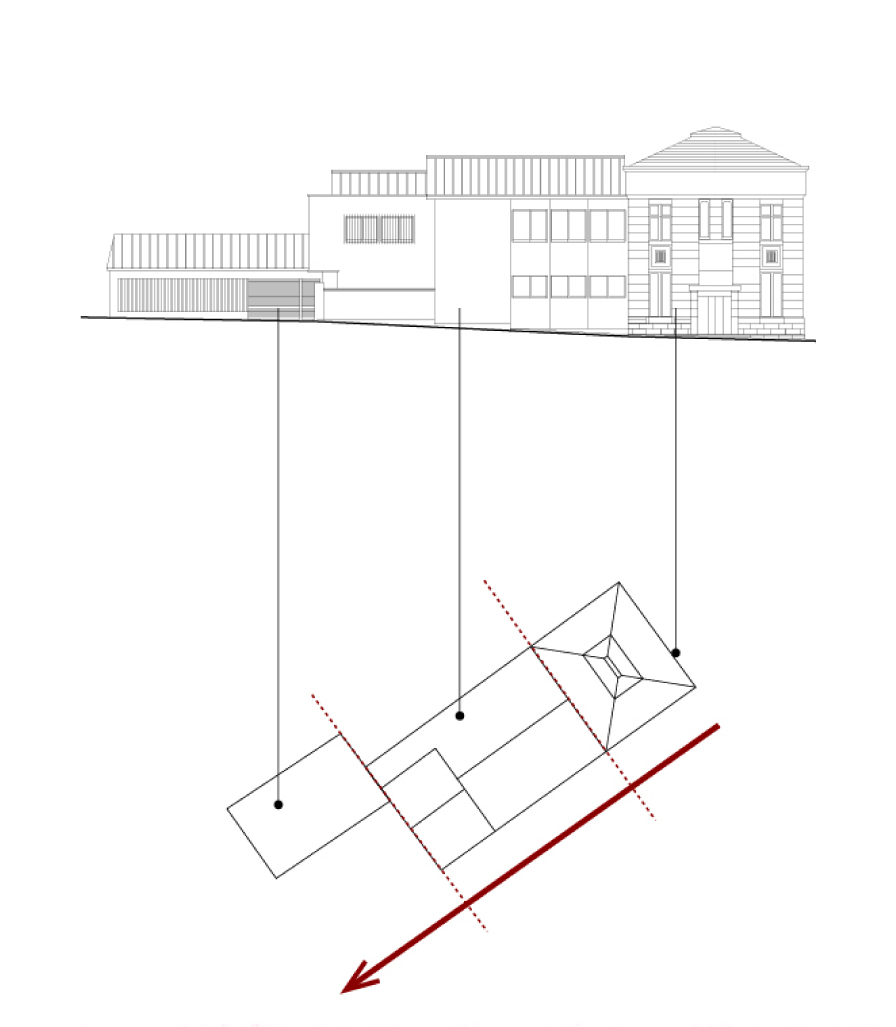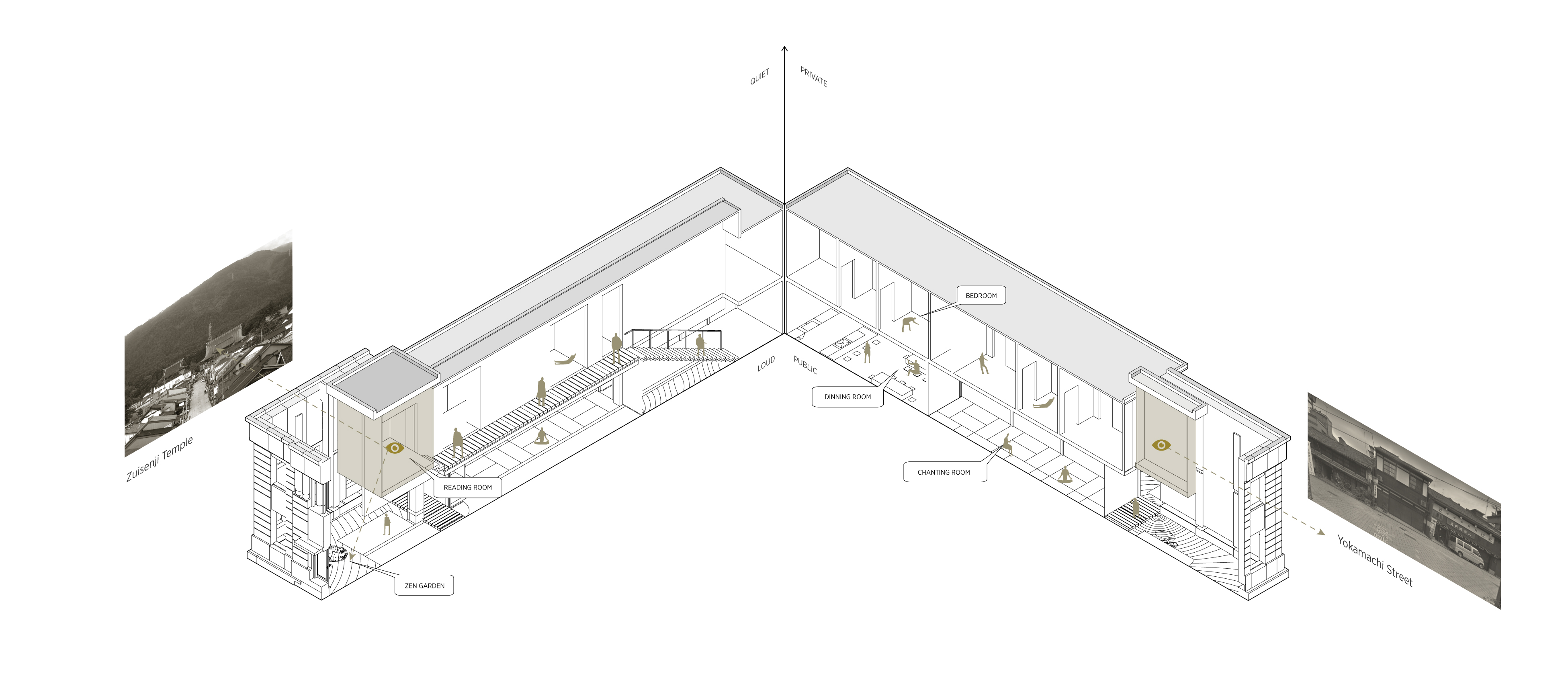
Buddhist Guest House
Spring 2020
Inami, Japan
Spring 2020
Inami, Japan

Since Saint Shakunyo built up Zuisenji Temple in 1390, Jodo-Shin Buddhist has developed in Inami. Wood carvers gathered together to restore the temple after fire accidents occurred. This led to the origin of the relationship between wood carving and Inami. There are inexplicable connections among the temple, the wood crafts and Yokamachi street according to the history. While nowadays, young people tend to be less interested in the traditional wood crafts in Japan.
How to treasure this cultural heritage in the context of today’s society? To reveal the beauty of this town with a historical and cultural experience, I’m proposing a Buddhist guest house to have the tourists settle down to stay longer in Inami. Meanwhile, providing a chance for modern citizens to seek for inner space through meditation.

As the first western-style architecture in Inami, the neoclassical building is preserved as a representative time memory. For the Hokuriku Bank Building, the three volumns from different times created such a continuity.
The new choreographic rules are set up based on factors of annual sun path, guests’ daily Buddhist’ routine, private level and noise level.
Architecturally, I’m adding two pieces of Corten Steel Walls to connect the old “host” (neoclassical building) and the “guest” (new additions). People are led by this architectural promenade for different activities based on monks’ daily routine.






